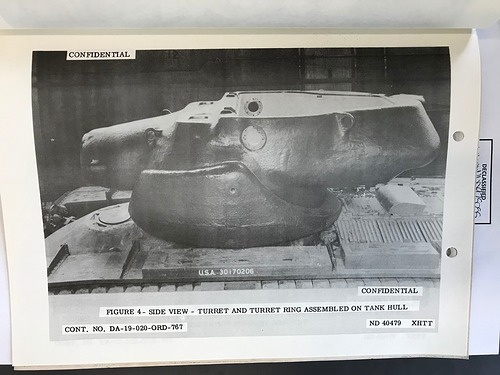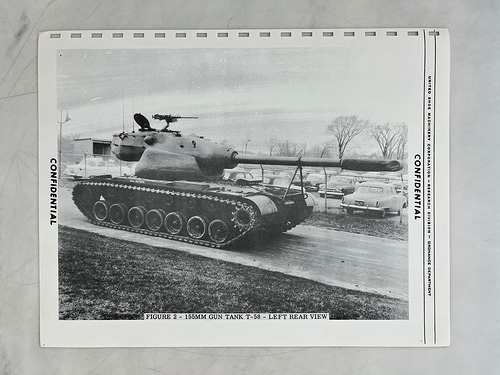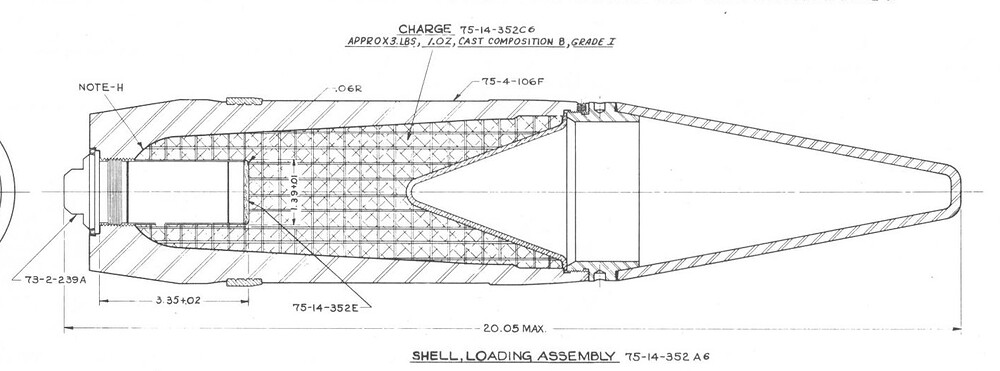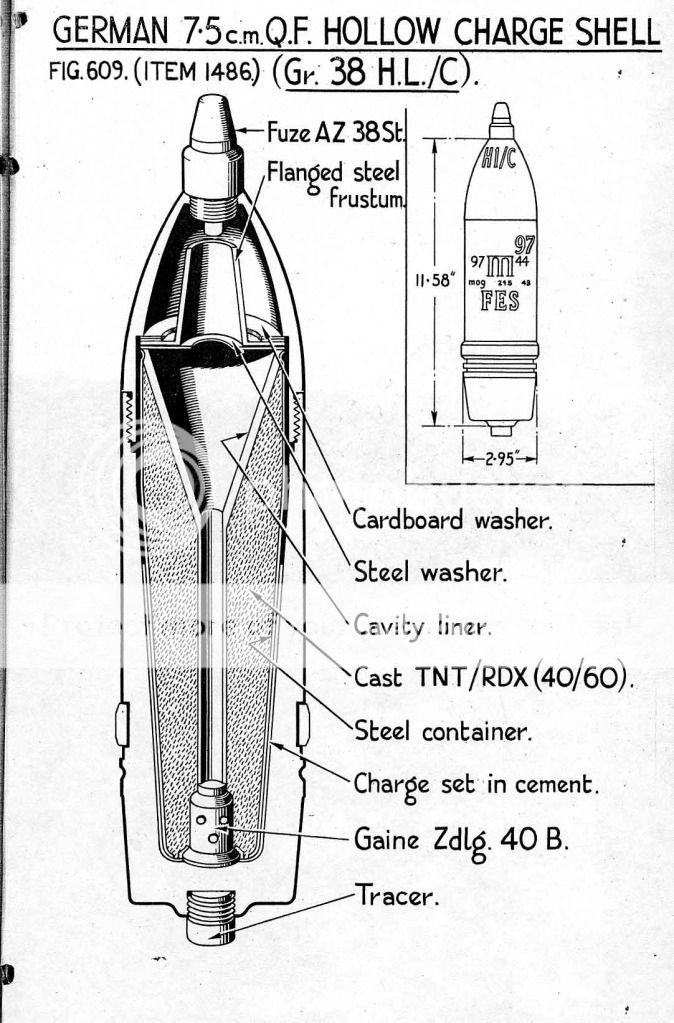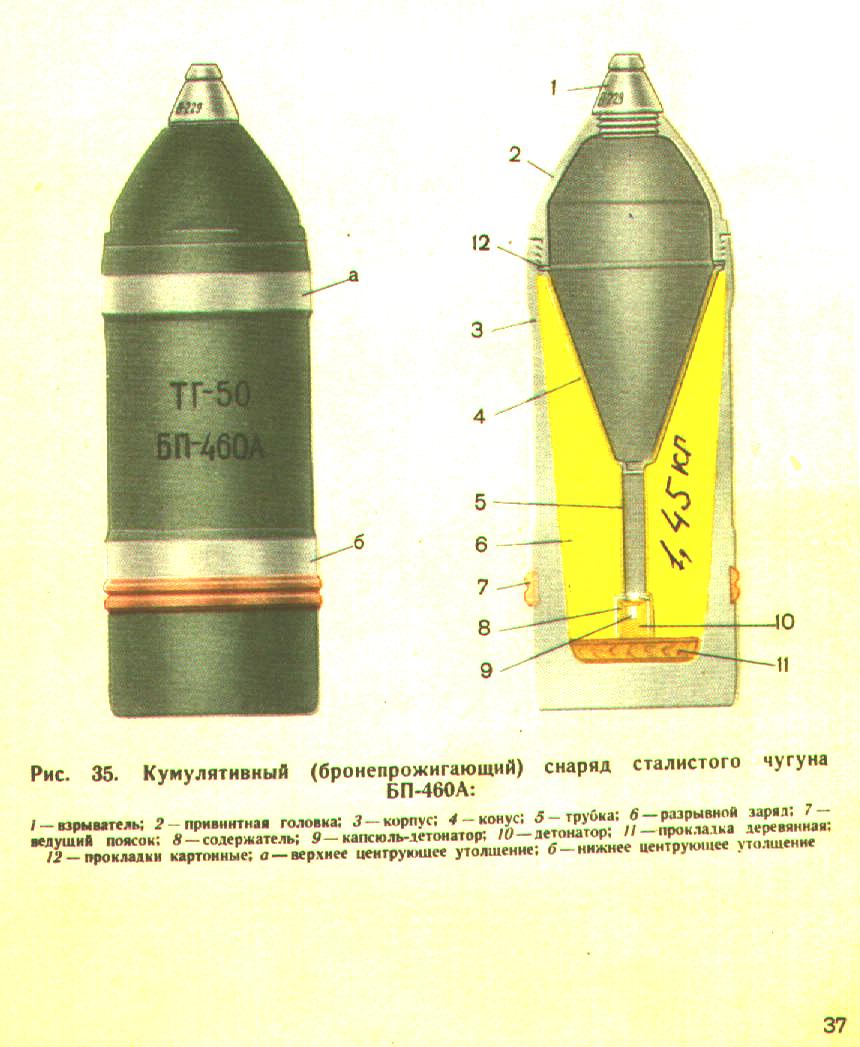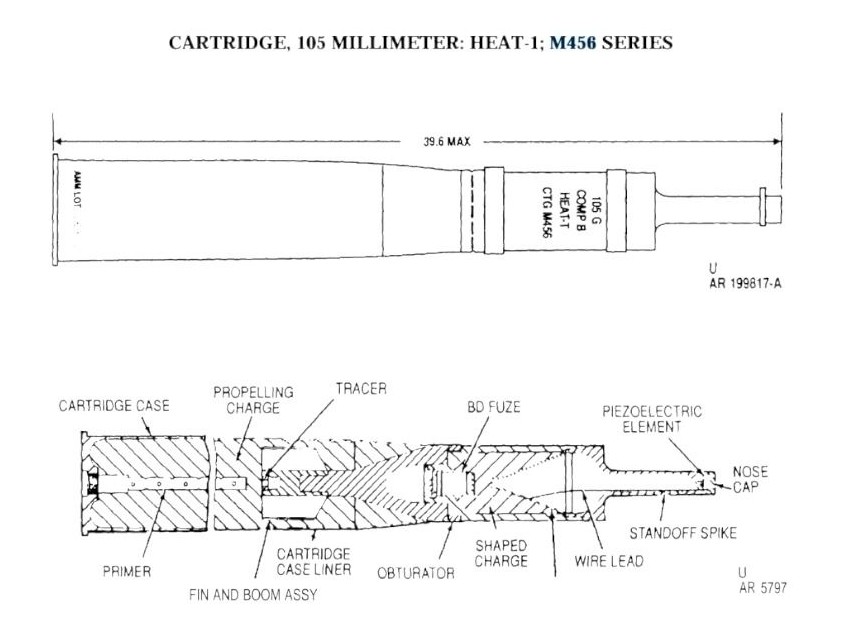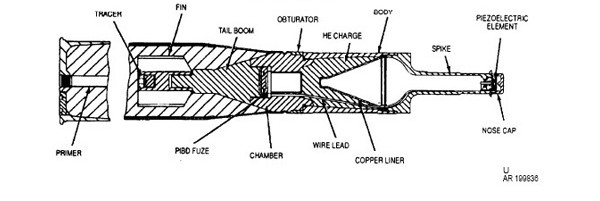I would like to make some suggestions regarding ammunition specifications for the T58.
current situation 20250907
T267 HEAT shell
The shell weight and explosive charge data for the existing 152mm M409 HEAT round were used unchanged, with only the muzzle velocity changed to 826m/s and the penetration to 406mm.
T152 HESH shell
At this stage, the T152 HESH ammunition is a direct copy of the 165mm HESH ammunition used by the M728 CEV and Centurion AVRE.
Improvement proposal
Better T267 HEAT shell
Although historical sources vary, the muzzle velocity of the T267 HEAT round is said to be between 701 m/s and 826 m/s, and the shell weight is said to be between 29 kg and 43.1 kg.
Since it would be difficult to scale the 152mm HEAT round, the best solution would be to scale other spin-stabilized HEAT rounds to fit the 155mm caliber.
While there are many spin-stabilized HEAT rounds in the game, we suggest several HEAT rounds that, when scaled, will have shell weights closer to the historical 29kg and 43.1kg shell weights.
-
105mm M67 HEAT
The 105mm M67 HEAT round was used in the 105mm howitzer. When scaled to fit a 155mm caliber, the round weighs 41.6 kg, contains 4.12 kg of explosive (Composition B), or 5.48 kg of TNT equivalent. -
75mm Hl.Gr38C
This is a spin-stabilized HEAT round used by the German .24 caliber low-velocity 75mm guns. When scaled up to 155mm caliber, the shell weighs 41.9 kg and contains 4.5 kg of Composition B explosive, equivalent to 5.98 kg of TNT. -
122mm BP 460A
This is used in the Russian military’s 122mm howitzers; when expanded, the shell weighs 27.4 kg, has a content of Composition B of 4.5 kg, and is equivalent to 5.99 kg of TNT.
Both assume that the explosive is Composition B, but since Octol was also used by the US military at the time the T58 was being planned, further consideration is needed.
Careful discussion and consideration is also needed regarding post-penetration damage. Given that the T267’s explosive charge is greater than that of typical 400mm penetration HEAT rounds (such as the 105mm M456 HEAT-FS or OCC 105 F1), it must be adjusted to inflict greater damage than these. While the M456 and OCC 105 F1 are coded with a damage coefficient of r=250, given that the T267’s explosive charge is around 5kg, it would be appropriate to adjust the damage coefficient to between r=600 and 1000, which is equivalent to or greater than the 9M14 missile, which has a 400mm penetration and a damage coefficient of r=600.
Better T152 HESH shell
Historical sources also state that the muzzle velocity of this gun was 701m/s to 826m/s, similar to that of the T267, and that the penetration force was 178mm.
If it was HEAT-FS
Due to the lack of documentation on the T267 HEAT round, some believe it may not be a spin-stabilized HEAT round, but rather a HEAT-FS round that can be fired from a rifle. Therefore, we will also list an expansion plan for when a HEAT-FS round is implemented.
-
105mm M456 HEAT-FS
The HEAT-FS round is widely used in the L7 105mm rifled gun and its derivatives. When scaled up to 155mm, the round weighs 33.2 kg, contains 3.07 kg of explosive, and in the case of Composition B, has a TNT equivalent of 4.08 kg. -
90mm M431 HEAT-FS
This is the HEAT-FS round used in the 90mm rifle gun. When enlarged to 155mm caliber, the shell weighs 29.4 kg, contains 2.76 kg of explosive, and in the case of Composition B, the TNT equivalent is 3.67 kg.
Since there is very little information available about the T58’s ammunition, we expect there will be some twists and turns before it can be implemented, but we would like to discuss it with you all and propose improvements.
